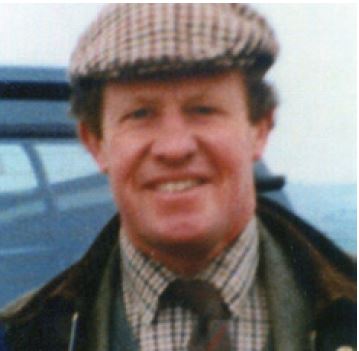Neville Anderson who served as a Queen’s Own Hussar between 1964 and 1983 was without question a one-off.

Popular with all who knew him, delightfully eccentric, self-effacing, kind, and full of charm. He was an accomplished and brave horseman, famous for his mishaps, but perhaps above all, he made people smile.
Neville Maxwell Anderson was born in Woking in 1944. His father was a successful soldier with two DSOs and who in due course would rise to the rank of Lt General. His mother was born in a Northern Irish saddle, her father being an MFH, and it was from her that both he and his younger brother Brian inherited their love of horses, hunting and racing.
After Tonbridge, he attended Sandhurst and was commissioned in 1964 into The Queen’s Own Hussars (QOH). He joined the Regiment as a Troop Leader at Catterick in January 1965 where hunting with the Bedale was de rigour. From Catterick, the Regiment was posted to West Germany and thence to Aden and Sharjah.
In 1968 he become a helicopter pilot and attended the pilots’ course at Middle Wallop, where by chance his chief instructor turned out to be his future daughter-in-law’s grandfather, who at the time wrote that “Anderson was enthusiastic to the point of dangerous”! The words “cavalier” and “dangerous” were often, hopefully inaccurately, used during his time as a pilot.
In 1969 he took command of a Helicopter Flight with his brother’s regiment, The 5th Royal Inniskilling Dragoon Guards in BAOR and was therefore attached to the Regiment where he made many friends, after which he was posted to The 1st Division Aviation Regiment also in BAOR.
In 1971 he returned to the QOH who by now were at Hohne, as a sabre squadron second-in-command. This tour at Regimental Duty included an emergency tour in Northern Ireland.
In 1974 he was posted as SO3 PR to Headquarters United Kingdom Land Forces at Wilton. He took his two racehorses with him and he met and married his first wife Jackie who would become the mother of his two children Oliver and Ruth. Oliver would in due course follow his father into the Regiment.
In 1976, by now a major, he returned to the Regiment at Detmold as the Squadron Leader of Command & Support Squadron which included the Recce Troop and the Anti-tank Guided Missile Troop. He was a very singular leader and popular with his troops. He and Jackie decided to live off camp and they rented a very pretty small Schloss some 20 kilometres from Detmold. Renting Schlosses became a bit of a habit with them for when he was posted to Osnabruck as a staff officer in 1977 they rented the Schloss that had been Montgomery’s HQ towards the end of the war, and they lived in a great state.
His next posting was to Shropshire where he was the Training Major for the QOMY and his final posting before retiring from the army was Officer Commanding Training Division Army School of Mechanical Transport at Leconfield.
He was both a soldier and a farmer, but in reality, it was the latter of these two careers that really excited him the most.
In 1983 he left the army and settled with his family at the delightful family home at Tarrant Keynston, Dorset. During this time he slowly built up his herd of beef cattle. He also became the Assistant Curator at the Tank Museum at Bovington until 1994.
After he and Jackie were divorced, and after an unhappy period, he met and married Mary in 1995.
On his mother’s death, the two brothers sold Tarrant Keynston House. Neville and Mary purchased Wyndham Farm near Silton in North Dorset which was the fulfilment of a dream for Neville who much enjoyed building up his herd of Aberdeen Angus, and under Mary’s expert supervision they created a warm and welcoming farmhouse. Before the necessary re-fencing was completed, several dinner parties were preceded by the guests chasing cattle down the lanes.
His sudden and unexpected death while he and Mary were building up the farm was a tremendous blow for his family, and also for all those who both knew and loved him.
He will be sorely missed by them and also by many from the local farming community.


